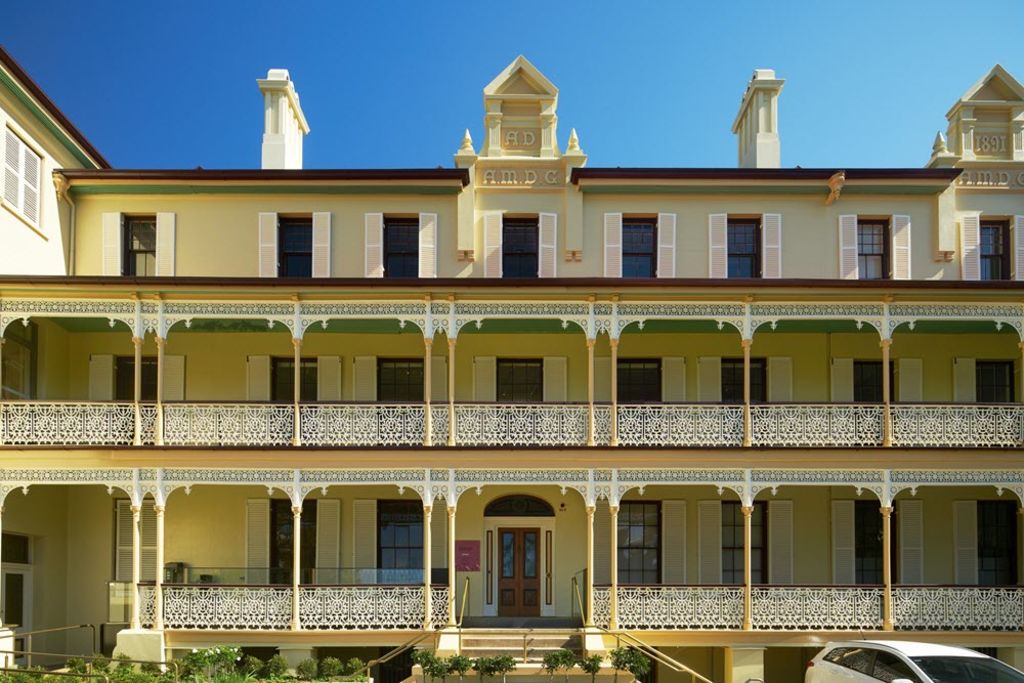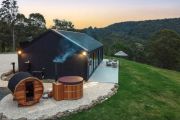
A redesign of Adderton, one of Brisbane's most historic buildings, is shortlisted for an architecture award
Built on the bones of one of Brisbane’s oldest houses, a recent and imaginative public gallery and community centre adaption embodies a many layered history and has exploited the right to use a blessedly distinctive brand name.
Who wouldn’t want to drop in to Adderton: house & heart of mercy?
Set above the Brisbane River and raised in 1858 as a substantial colonial Georgian home for medico and member of Queensland’s Legislative Council Dr John Fullerton, the original house was constructed by John Petrie, later Brisbane’s first mayor and an identity whose pioneer family name appears on some of the state’s major streets and a north Brisbane suburb.
In 1863, Adderton shifted from secular to sacred use when the building was purchased to become the foundation or “mother house” of the Sisters of Mercy.
With major extensions and on-site schooling for girls (All Hallows’), the order used the building for 144 years as a convent and centre for social outreach until 2007 when the dwindling population of nuns moved to smaller suburban houses.
The activities of the Mercy sisters continued on at Ann Street, as does the school.
But with accessibility issues and a west-facing courtyard, parts of the convent were converted into the order’s heritage centre while much of the rest echoed with underutilisation.
Yet the sisters harboured a big vision for reviving Adderton as a contemporary art space, while keeping it welcoming for activities focused on social justice, learning and spiritual reflection.
Four years ago they enlisted local firm Wilson Architects to come up with a master plan to better exploit this important element of Brisbane’s built history.
The firm has an almost equally deep, four-generation involvement in Brisbane. Wilson Architects’ managing director Hamilton Wilson said the task was to somehow rationalise multiple circulation problems – for instance with the lovely but now non-compliant 1858 staircase off-limits; remediate “the significant space of the uninhabitable, heat-gaining courtyard”, and sort out a structure “that was so fragmented and cellular”.
As with any heritage project, the onerous part was to do any amendment while touching the fabric as gently as possible. The project is now shortlisted in the heritage category of the Queensland 2020 architectural awards.
Wilson’s project leader for the creative rejuvenation, Melissa Hughes, says along with making “the unused courtyard right in the middle of the building” operable as a gathering and events space by adding bleacher seating, and roofing it with a metal canopy raised high enough for breezes to enter, “doing the adaption in a way that would also draw attention to the order’s past endeavours was very interesting”.
“They had an amazing culture of craftwork and lacemaking,” she says.
In that now multi-functional courtyard hangs an artwork made of marine-grade rope that is simultaneously a stylised strip of lace and a reflection of the intricate iron lacework decorating the balconies.
“With the program of the building to also become a gallery, the idea was to make what is old seem new when seen through new eyes,” Hughes says.
There is another intriguing juxtaposition in the foyer of the Mini Mercy children’s gallery where, over a base structure of plywood that protects the historic walls, a covering of retina-challenging hot pink and pale lime felts received the sisters’ approval.
Further augmented by a semi-circular green vinyl fixture that is a seating/climbing, “play terrain portal”, the almost-pop-art entry sets up another old/new nexus because it is so near Adderton’s grand 1858 staircase that has become a Victoriana installation because it is not to be used by visitors.
Following completion of the $3.5 million project, Adderton: house & heart of mercy opened last August and “although it can be a tricky site because it is situated within the school grounds”, according to interim manager and curator Linda Phillips, the centre is working well.
With 11 galleries that allow for permanent and changing exhibitions, the curator says, “Although we have a lot of audience building to do, we’re so far happy with the reception we’re getting and we’re finding that half the visitors are spending two hours here which talks about us having a lot of different things to engage with”.
Phillips knows Adderton already adds up to “a unique and exciting venue – like nothing else in Australia”. With the gallery currently closed, it is looking forward to popular post-lockdown discovery that she believes will reveal the greater potential of the place.
“It’s a name to grow into.”
adderton.org.au










